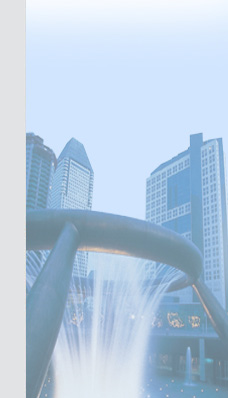Untitled Document
AOGS Election of Office Bearers - 2010 to 2012
back
|
Bor-ming Jahn (CV)
Professor & Director
Institute of Earth Sciences
Academia Sinica, Taiwan |
Since the first AOGS Meeting was held in 2004, I have observed the continuous progress and growth of the AOGS activities. I understand that the original idea was to make AOGS as the Asian-Oceanian counterpart of AGU (American Geophysical Union) or EGU (European Geosciences Union), and as a dynamic, innovative and interdisciplinary learned society. I fully endorsed this idea, and hence I have continuously participated in the society’s annual meetings.
As written in the society’s constitution, the primary objectives of AOGS are to (1) encourage cooperation between scientists concerned with studies of the Earth, planetary and space sciences; and (2) promote development of the relevant sciences, particularly within Asia and Oceania. The society will achieve the objectives through the organization of scientific meetings, publications and other suitable means. As a scientific society, our meetings are dedicated to the pursuit of excellence in the organization and running of conferences, meetings, workshops and short courses in all areas of earth and planetary sciences, and are for the benefit of all and, in particular, young scientists.
The earth sciences are undergoing a rapid change in an academic and public environment where issues of energy and climate are recognized as critical. Earth sciences encompass a broad spectrum of interdisciplinary science and technology. AOGS should help expand opportunities for interdisciplinary approaches to the geosciences, and to maintain a vibrant and inclusive organization to accommodate knowledge and diversity.
Asia might become the global economic driver of the 21st century, but scientific development has to come with it in order to maintain its economic development sustainable. For this reason, AOGS should and could play an important role in the promotion of earth sciences to economic development; that is, to encourage the application of earth science knowledge to human needs and societal challenges.
As a president, I would like to continue the success already accumulated by all the AOGS council members since the creation of the society in 2004, further promote the earth science disciplines and enhance the growth of the society. It is clear that AOGS of today cannot be compared with AGU and EGU, and it might take one or two decades to chase the prestige of the two societies. We need to grow not only in sheer number of attendance, but also in genuine scientific quality of the annual meetings. In order to attract attendance, shifting venue of annual meeting should be discussed. To improve the scientific quality we first need more active participation of scientists from academically better developed countries in the region. This could be further enhanced by inviting more top scientists from other continents to participate and deliver key-note or invited speeches in our annual meetings.
Finally, AOGS should have ambition to promote international collaboration and elevate scientific growth and status of all its members, inclusive of gender, race, and ethnicity. The society should help train earth science students through meetings, conferences, workshops and short courses to be possibly provided by the society. The society has to think of having a regular journal by its own or through a contract with a publisher, such as Elsevier. Ultimately, the society could offer advice to policy-makers to make correct and wiser decisions.
|




